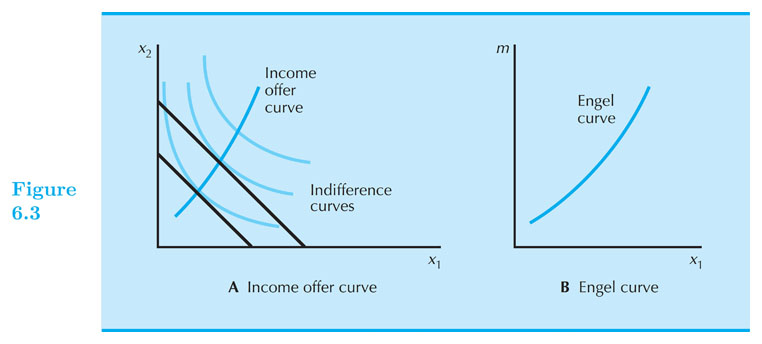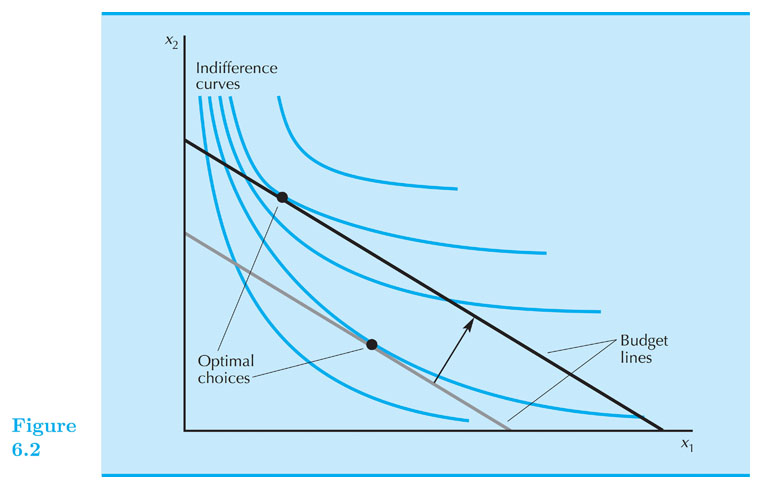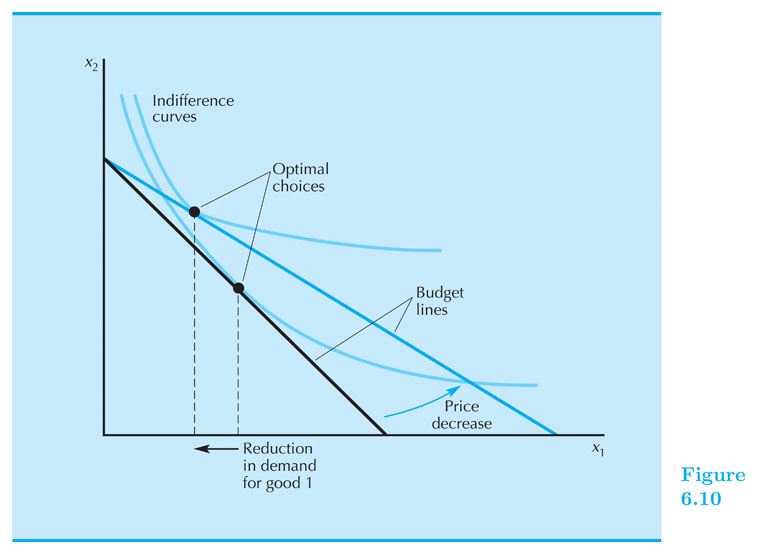Demand
Intermediate Microeconomics (Econ 100A)
Kristian López Vargas
UCSC
Demand function
"Optimal bundle" for generic prices and income = Demand Function.
The "optimal bundle" changes when income or prices change: that is why we call it demand function.
Demand function
For a specific utility (preferences) and given set of income and prices, we have learned how to find the optimal bundle.
If you solve this, so called, consumer's problem for generic income and prices $ (p_1,p_2,m) $, what you obtain is the demand function: $ x_1^{*}(p_1,p_2,m) $.
For example, if utility is Cobb-Douglas, then $ x_1^{*} (p_1,p_2,m) = \frac{a m}{ (a+b) p_1} $
A consumer's demand function indicates the optimal choice for a given set of prices and income.
Changes in income
$ x_1 = x_1(p_1,p_2,m) $
How does the optimal consumption of $ x_1 $ changes with changes in income? $ \frac{\partial x_1}{ \partial m } $ Vs. $ 0 $
- A normal good: its consumption increases when income increases.
- $ \frac{\partial x_1}{ \partial m } > 0 $
- Do graph
- An inferior good: its consumption decreases when income increases.
- $ \frac{\partial x_1}{ \partial m } < 0 $
- Do graph
Engel Curve
- The Engel Curve maps each level of income to the optimal consumption of a good, holding prices constant.

Engel Curve - Inferior good

Changes in prices
$ \Delta p_1 $ tilts or pivots the budget line.
How does the optimal consumption of $ x_1 $ changes with changes in $ p_1 $? $ \frac{\partial x_1}{ \partial p_1 } $ Vs. $ 0 $
- Ordinary good: its consumption decreases when its price increases.
- $ \frac{\partial x_1}{\partial p_1} < 0 $
- Do graph
- Giffen good: its consumption increases when its price increases.
- $ \frac{\partial x_1}{\partial p_1} > 0 $
- Do graph
Demand curve
- Demand curve: describes the relationship between the optimal choice of a good and its price, with income and other prices held constant.

Giffen Good

Substitutes and Complements
Gross Substitutes: $ \frac{\partial x_1}{ \partial p_2 } > 0 $
Gross Complements: $ \frac{\partial x_1}{ \partial p_2 } < 0 $